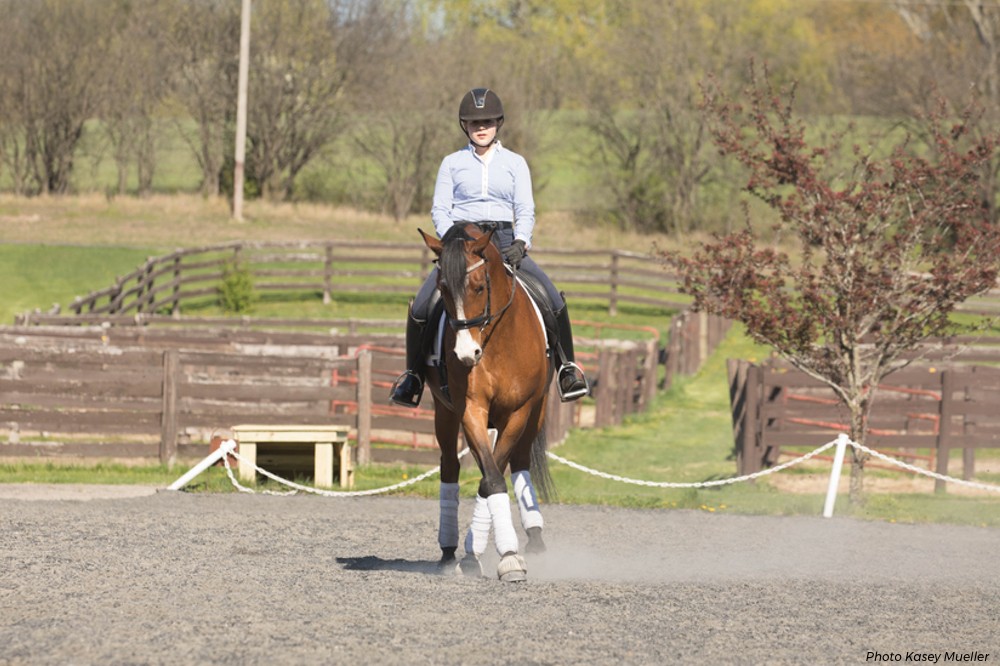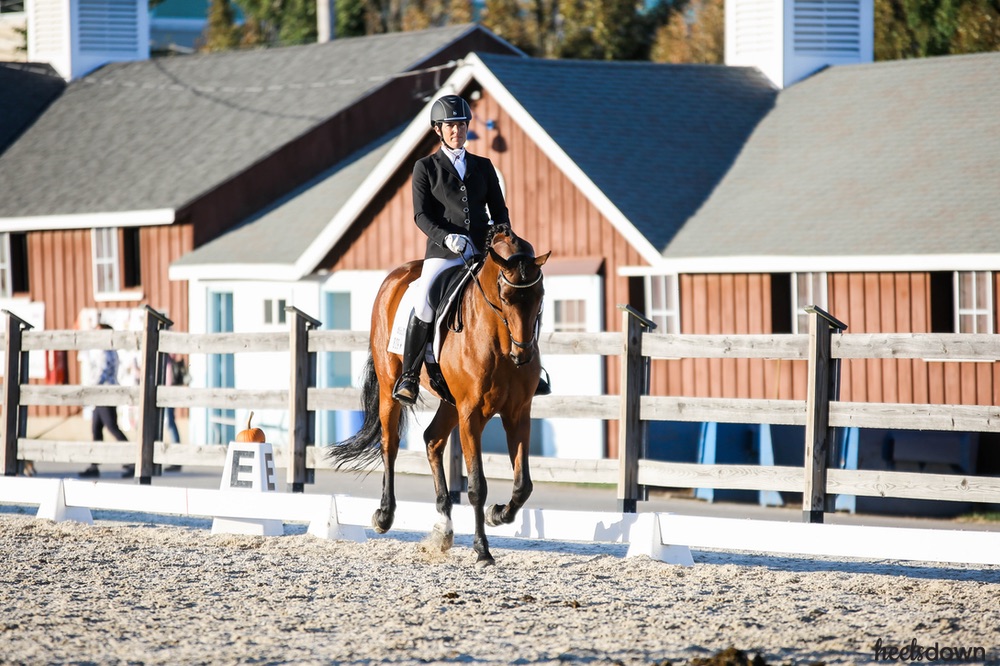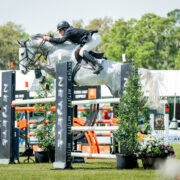Contact Explained

Many people are confused by the concept of contact. The rein is one of three contact points for the rider, the other two being seat and leg. The horse must not be afraid to seek the bit, and the rider must allow and encourage this behavior. The feeling in the reins reflects the balance of the horse – a perfectly balanced horse can have a very light contact to the mouth, while a green or unbalanced horse may be a bit heavier in the rein.
What feeling are we looking for as riders? Proper contact should feel like elastic. Think of the contact to the horse’s mouth like a rubber band – you want that rubber band to be elastic when you stretch it, giving and not rigid. Never should the connection to the bit feel stiff.
Establishing Contact
The contact is not always soft and fluffy. Particularly for young horses, it is OK for the contact to be heavier, but the horse must learn that this is not a braced feeling. The rider’s arms must not have tight, locked muscles – rather, they must follow the motion of the gaits of the horse with a supple elbow. A horse that is ridden with a rigid hand and arm has no chance to stay soft in his mouth.
The horse must be driven from the hind legs into the reins with balancing half-halts to regulate the gaits. Half-halts ridden from a forward hind leg into a regulating seat and rein will help keep him in a good balance. Remember that at each stage of training, the half-halt is different for the horse. Young horses may need a more basic, clear half-halt than an FEI horse who is well-schooled and has a better understanding of his own balance.
Read this next: Sit the Trot Like an Olympian
Exercises to improve the contact start with forward riding. The horse that is ridden backwards will never correctly accept the bit because it is not using its body properly. A young horse, for example, benefits from simple lines and large circles. If a horse does not understand stepping to the bit, allow him to find the bit in a frame he is comfortable in.

To start, it is okay for him to accept the bit without being round. Often, greener horses find contact above the bit. Once they understand the rider’s hands are safe, exercises can be used to gymnastically work the body.
When the horse is allowed to move forward without much pressure on his mouth, he will relax and begin to fill up the reins. The rider must feel that when he/she applies pressure from the legs the horse is unconditionally moving forward.
‘What If He Doesn’t Step to My Hands?’
If a horse doesn’t step into the contact, make sure the reins are not too long. Remember, if there is no stretch on the rubberband it will never feel elastic. Make sure the reins are short enough to have some communication to the mouth.
“Exercises to improve the contact start with forward riding. The horse that is ridden backwards will never correctly accept the bit because it is not using its body properly.”
If the horse really does not take the bit, a leading, open rein (moving the hand from the center by the withers to near your thigh) can be used to temporarily “fill” the contact. However, this is not a forever way of riding, and care should be taken to always return both hands to the center of the neck.
Create contact for several strides, then carefully return to a neutral position so the horse learns to step to the hands and not to always have the contact created by the rider. But the leading rein creates contact on the corners of the horse’s mouth to teach him the idea.
Most important is that the rider does not put too much pressure on the horse’s mouth. After all, contact is simply that, contact to the mouth.
Like this article? Try: Nail the Test with Crisp Transitions
Transitions, especially from trot to walk, also encourage the horse to seek the bit. Riding frequent transitions is a very useful tool for many horses who are light in the bridle.
‘What if My Horse is Heavy In the Hand?’
After accepting contact, many horses will then begin to pull on the reins and get “heavy” in the hand. This is often caused when a horse is not pushing enough from active hind legs, encouraging him to “pull” himself along using his front end, balancing on the forehand. This is when riding more bending lines and transitions become useful.
Remember to frequently find ways to rebalance the horse with half-halts. Transitions from trot to canter often loosen the horse’s back and will improve contact by helping re-distribute weight back onto the hind end, thus lightening the front end. Make sure that all transitions are ridden forward with the thought of starting the new gait, not stopping the old one. This will encourage the hind legs to continue to travel forward.
“Most important is that the rider does not put too much pressure on the horse’s mouth. After all, contact is simply that, contact to the mouth.”
With that thought in mind, make sure the horse does not run in transitions. Encouraging him to stay off the forehand will keep him lighter in the bridle. If the horse lands the trot transition in too large of a trot he will most likely balance on the reins. For this reason, after a transition from canter to trot, make the trot small after canter. Sit up tall, engage your core and squeeze/release with your thigh, knee, and outside rein low by the wither to bring him back to a balanced trot. Use your voice to encourage him to wait after the transition, and make sure to praise when he has responded. Then allow him to ride forward again.


